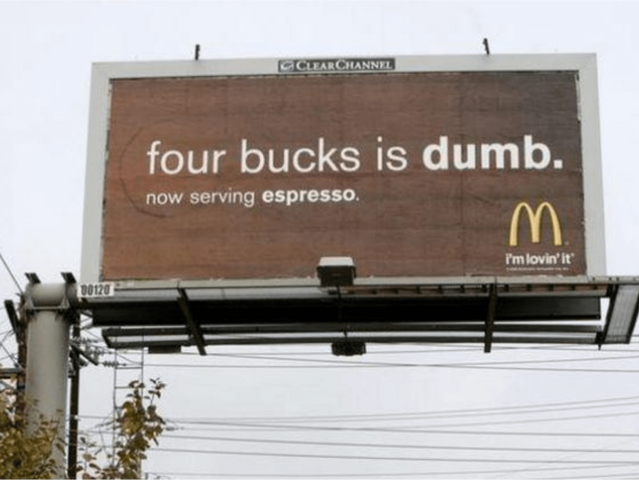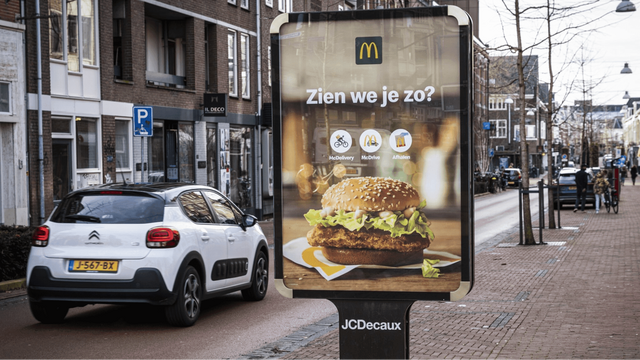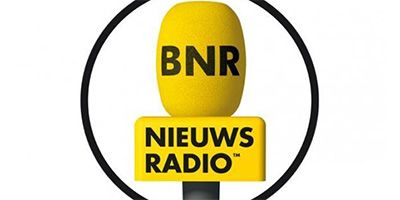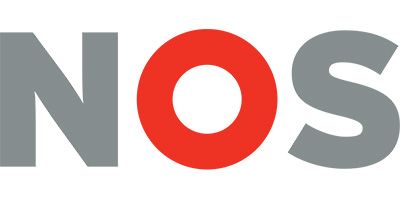
Consumers love them: creative marketing campaigns. Think of Centraal Beheer's "Just call Apeldoorn", ORHA's "The purple crocodile", or Calvé's "Pietertje". And it's not just creative commercials that are well-received. Marketing expressions such as billboards, advertisements, or flyers are often enjoyed and shared when communicated creatively.
But how do companies create creative advertisements? What psychological principles are used to give your advertisement a creative twist and make people think? In this blog, we provide various examples of creative marketing communication expressions and the psychological principles underlying them.
It's All About Associations
Imagine you're entering the whisky market and know that people associate age with quality. What you probably won't put on your packaging is: 'New recipe!' or 'Established in 2023'.
This ensures that people do not perceive your brand as authentic and does not trigger the deeply rooted association in the brain that 'old is good'. The cognitive bias where age is directly associated with, for example, experience and quality.
The gin supplier Sir Edmond, established in 2016, cleverly uses this. The bottle states when the gin originated: EST. EARLY MMXVI. Your first thought will probably be 'that must have been a while ago, because Roman numerals are from the past'. Gin, like whisky, is mainly seen as good when it is older, and that is exactly what Sir Edmond wants to convey, because if they had put EST. EARLY 2016 (MMXVI converted) on the bottle, people would probably have been less likely to associate it with old. In this way, they strengthen their brand image by linking associations of experience and quality to their brand.

How McDonald's Uses Anchoring
From the old = good association, we move to the anchoring principle, cleverly applied here (image below) by McDonald's.

McDonald's displays the following text on the billboard: ‘Four bucks is dumb, now serving espresso’ taking a jab at Starbucks. McDonald's uses the anchoring principle here. The principle where people are influenced by previous information (four bucks is dumb) when forming a judgment or making a decision (buying espresso). The first feeling McDonald's creates is: 4 dollars is a lot. This is the basis on which people process the next information: buying espresso. The anchor McDonald's uses can thus influence people to buy their espresso at McDonald's from now on.
Another successful marketing campaign that cleverly uses psychological principles is Coca Cola's, where first names were printed on their iconic bottles.

Imagine walking in the supermarket and there are various Coca Cola bottles on the shelf with all sorts of names on them. It probably catches your attention and you immediately check if your name is among them.
We are naturally inclined to focus on ourselves. Social psychologists call this the 'egocentricity bias’. Can you remember when you were talking to someone and thought someone else said your name, even though they didn't? Our innate egocentricity makes us pay more attention to people and objects when they feel personal to us. A Coca Cola bottle in the store with your own name on it strongly appeals to the imagination and thus increases the product's prominence and virality.
Gratis Webinar: "Geur in Gedragsverandering & Marketing"
Ontdek in dit webinar hoe geur ons onbewust stuurt in denken voelen en doen. Met inzichten uit neuro en gedragswetenschappen leer je hoe geur effectief kan worden ingezet in marketing publieke ruimte en gedragsverandering inclusief praktische voorbeelden en tips.
Schrijf je nu gratis in voor deze lunch-webinar op Wednesday 7 May van 12.00 tot 12.45
Hyundai & Confirmation Bias
Another interesting bias frequently used in advertising is the confirmation bias.
The confirmation bias is the cognitive bias where people tend to seek, interpret, and remember information in a way that confirms their pre-existing beliefs, while ignoring information that contradicts them.
This is something car company Hyundai cleverly uses in their marketing strategy. A few years ago, they used the slogan: "Have you been seeing a lot of Hyundais lately too?". Each time someone sees a Hyundai, it reinforces the pre-existing belief: Many Hyundais.
Besides the clever use of the confirmation bias, Hyundai also cleverly uses the scarcity effect in their advertisements. The scarcity effect is a cognitive bias where people tend to find an object or resource more valuable if it is scarce or its availability is limited.
This sense of scarcity is created by the phrase 'Now only 8% additional tax'. It is not stated how long one has to get 8% additional tax, maybe 10 years. However, this feeling is not obtained after seeing the advertisement, as a sense of scarcity is created (by the words 'Now only').

Ask a Question
In addition to the previously mentioned biases, marketers and advertisers also cleverly use the natural tendency of people to answer questions directly (for ourselves in our heads).
We humans are social beings where communication plays an important role in our daily lives. Marketers cleverly use this, for example by asking a question in advertising ('See you soon?') as in the McDonald's example below.
Besides the power of asking a question, the form of the question also has a strong influence. McDonald's asks a targeted and closed question that can only be answered with yes or no. They do not ask if you feel like having a hamburger, but if you are coming to eat a hamburger later, assuming that humans always feel like having a hamburger (stemming from our old reptilian brain, where food is one of the strongest drivers of behaviour), the question 'See you soon?' will work out much better than the sentence 'Do you feel like having a hamburger?'. The sentence 'Do you feel like having a hamburger?' requires an extra thought step. First, 'do I feel like having a hamburger?', then 'do I feel like having a hamburger now?' and then, 'do I want it from McDonald's?'. With the question 'See you soon?' McDonald's sublty guides our thinking by assuming that we already feel like having one of their hamburgers.
Fun fact, this campaign is probably most effective around mealtime because we feel more like eating then, which benefits prominence, and in the evening because our brains are tired from a day of thinking and thus less resistant to biases and heuristics.







